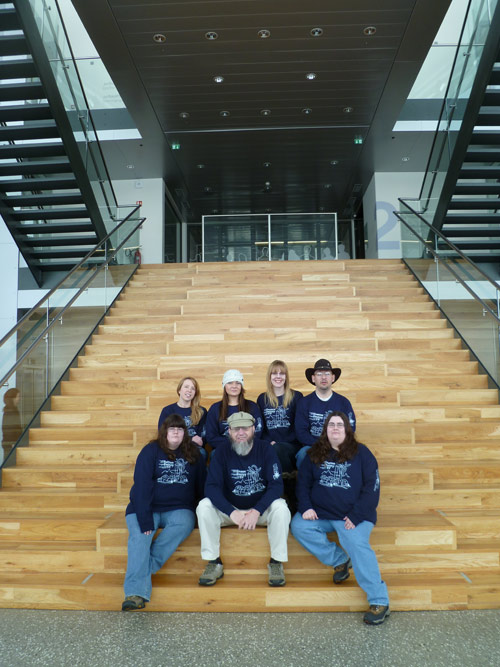A group of geology students and a professor from the University of Maine at Presque Isle recently explored the geological wonders of Iceland as part of the Geo-Ecology Club’s annual spring break excursion.
“I have led a Geo-Ecology Club trip near every Spring break for the 23 years I have been at UMPI, but this is the first time that we needed an airplane to reach our destination,” trip leader Dr. Kevin McCartney said.
During their trip, the Geo-Ecology Club explored the southwestern quarter of the island from their home base – an apartment near Reykjavik. The group had five full days, which were spent in traveling a loop in each direction, plus a day of exploration and shopping in Reykjavik. An emphasis was placed on visiting geological features, but the group also saw various historical and cultural sites.
UMPI students who participated in the trip included Kayla and Sarah Ames, Michelle Hersey, Gary Parent and Kassy Watson.
Iceland is a fairly small country with a population of more than 300,000 in an area a little larger than Maine, according to information McCartney gleaned during the group’s travels. It was a territory of Denmark until independence in 1944. Icelanders are among the most literate in the world, with many people speaking English among several languages. The country is largely misnamed as it is warmed by the Gulf Current and is generally warmer than Maine. There was little snow in Iceland until about two weeks ago, and only a few inches on the ground during the UMPI visit.
The northeast loop followed the “Golden Circle,” which included Pingvellir National Park. The park is situated upon the spreading rift that separates the European and North American geologic plates. Near there is the geyser field that includes Strokkur, the largest active geyser in Iceland, which erupts every five or 10 minutes and reaches heights of about 30 feet. Beyond that were the spectacular waterfalls at Gullfoss, which are somewhat smaller but equivalent to Niagara Falls.
For their southeastern loop, the group traveled along Iceland’s southern coast. This day included a visit to the Hellisheiđi geothermal plant. This plant provides electricity for Reykjavik and, at 1.2 megawatts per day, is the second largest in the world. The south coast of Iceland has many volcanoes, including Eyjafjoll which erupted last year and closed many airports throughout Europe. The mountains along the southern coast feature many spectacular waterfalls. The rocky coastal scenery around Dyrholaey was considered the most beautiful scenery of the trip.
The northwest and southwest loops the group took included a drive up a fjord and a visit to the Blue Lagoon hot springs that are a tourist attraction associated with the runoff from a geothermal energy plant. There was also a visit to a second geothermal plant and roadside solar system model, though this model was only about a sixth the size of UMPI’s Maine Solar System Model. Members of the club bought woolen Icelandic sweaters and collected basalt rocks and black beach sand. Dr. McCartney brought back what he claims is the best coffee that he has ever tasted.
“It is amazing to see so much volcanic structure at the very place where the continents separate,” said Michelle Hersey, who attended the trip to learn about geology that might relate to her position at County Environmental Engineering.
Kayla Ames, an English major who participated in the planning for this trip, commented, “It is fascinating to learn about Iceland’s Nordic history.”
The Geo-Ecology Club is already planning a trip next year to visit the science and other museums in Washington D.C., but hopes to visit Iceland again in three or four years.
